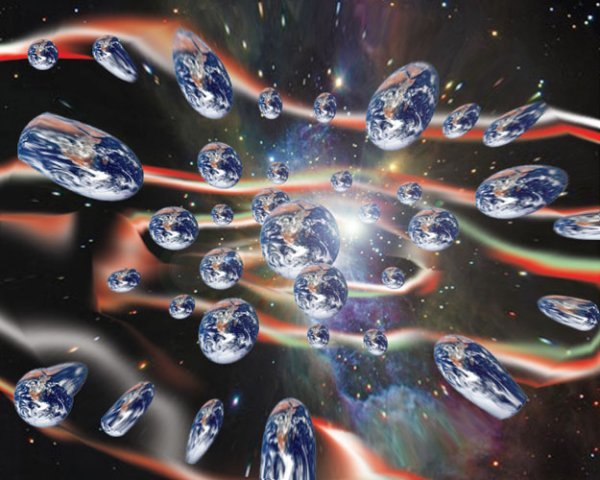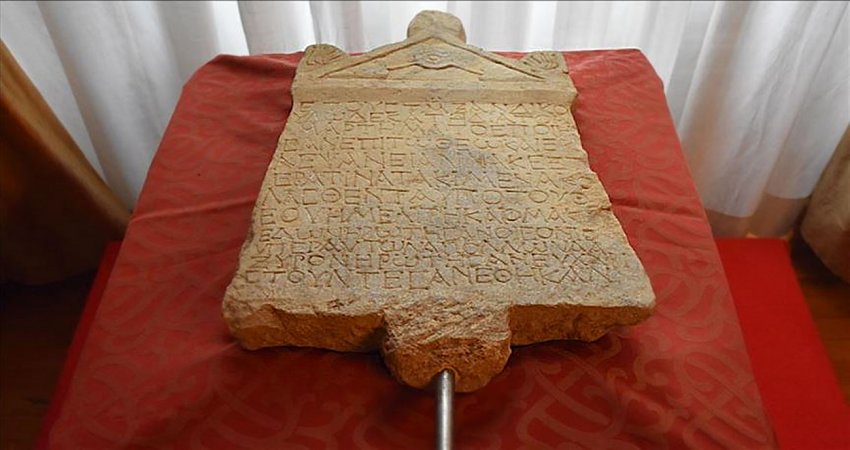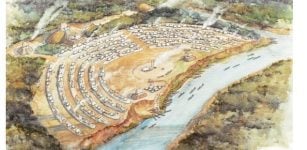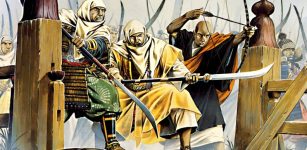Were Medieval Philosophers Familiar With The Multiverse Theory?
MessageToEagle.com – Has modern science only re-discovered the multiverse theory that was already discussed among medieval scientists?
If true, it is somewhat shocking and rather embarrassing. Is our Universe surrounded by countless invisible worlds?
According to a new study, this is a question that was debated a very long time ago. In fact, these scientific discussions trace back to the 13th century, if not even earlier.
Today, the intriguing multiverse theory occupies the minds of some of our best physicists and cosmologists.
However, it would seem that our modern scientists are contemplating a theory that was already discussed among medieval photospheres in the 13th century.
The multiverse is a theory in which our universe is not the only one, but states that many universes exist parallel to each other. These distinct universes within the multiverse theory are called parallel universes. It should be added that all physicists do not subscribe to the idea that several universes exist, but the multiverse theory is popular among many scientists.

Robert Grosseteste (c. 1175 – 1253) was an English philosopher, theologian, scientist.
Many consider him to be the real founder of the tradition of scientific thought in medieval Oxford, and in some ways, of the modern English intellectual tradition.
He was “one of the most dazzling minds of his generation, lauded by his successors as a mathematical genius, theologian, politician and church leader; he was the bishop of Lincoln from 1235-53,” medieval historian Giles Gasper of Durham University said.
Grosseteste re-discovered works of Aristotle and elaborated on theories that truly mind boggling at the time.
Among his scientific writings, his treatise on light (De luce) is the most famous and extensively quoted, with thought-provoking claims that he predicted the “Big Bang” theory of cosmological expansion eight centuries ahead of Lemaitre and Hubble.
In a new study, physicist Richard Bower of Durham University, UK examines the connection between cosmology and history. The result and of conclusions of his study are very intriguing.
“The results give us a much deeper appreciation of science in the 13th century. From a scientist’s perspective, I find I had previously completely underestimated the depth of logical argument in the Middle Ages,” Bower said.
Bower and his team started with examining the ancient text De Luce, which means “On Ligh”.
The text written by Grosseteste describes how light interacts with matter in terms of modern mathematics and shows that it can indeed generate the philosopher’s claimed structure of the Universe.
“De luce was probably written about 1225, almost contemporaneously with De colore, although almost nothing is known of Grosseteste’s whereabouts at this time in his life. Grosseteste began De luce by immediately making the bold postulates that light (lux in the Latin) is the first corporeal form and that it multiplies itself infinitely, expanding instantaneously from a point into a sphere of any size.
He argued that neither the attribute of corporeal form nor matter has dimension but that, because form and matter are inseparable, by its expansion into all directions light introduces the three dimensions into matter.
In the beginning of time, light extended matter, drawing it out along with itself into a sphere the size of the material universe,” Bower and his team write in their study.
In De Luce, Grosseteste also assumed that the universe was born from an explosion that pushed everything, matter and light, out from a single point. Anyone with knowledge of astronomy will quickly understand this was an idea that is strikingly similar to the modern Big Bang theory. Grosseteste’s theory was based on the dominant cosmological model was developed mainly by the Greek philosopher Aristotle. He postulated that there were nine planets (called spheres), one inside the other, with planet Earth at the center. In an attempt to understand what Grosseteste was aiming to explain, scientists wrote down his ideas as if they were modern mathematical equations. The team then used a computer to solve these equations, and to see whether they explained the universe as Grosseteste imagined it.
The results were astonishing. The science team found that the universe imagined by Grosseteste indeed could have formed exactly the way he described it.
“Amazingly, the computer simulation shows that Grosseteste’s description is accurate,” Bower said.
However, Grosseteste’s reasoning only works if there is the right number of properly ordered celestial spheres – and this only happens in the simulations if there are very specific starting points.
“On their own, Grosseteste’s laws aren’t enough to produce the universe he thought he lived in,” Bower said.
The medieval philosopher realized this problem, too. In order to solve this dilemma, he added an extra reason to explain why there were “exactly nine celestial spheres plus one, an ‘imperfect’ Earth,” Bower said.
A closer examination of Grosseteste’s explanation reveals that his ideas were remarkably similar to the reasoning applied in modern cosmology.
Today, the laws of general relativity and quantum mechanics are used to explain the origin of the cosmos, but they do not tell us the amounts of normal matter, dark matter and dark energy in the universe.
“To explain this, cosmologists often appeal to some new theory, such as a super-symmetry theory, for example,” Bower said.
Therefore, according to some physicists, if we live in a multiverse, then there is an infinite number of universes surrounding our own
In the same way, if the parameters in Grosseteste’s model are modified, there will be a different number of spheres around the Earth.
And although De Luce never mentions the term “multiverse,” Bower said that Grosseteste “seems to realize that the model does not predict a unique solution, and that there are many possible outcomes. He needs to pick out one universe from all the possibilities.”
“Robert Grosseteste works in a very similar way to a modern cosmologist, suggesting physical laws based on observations of the world around him, and he then uses these laws to understand how the universe formed,” Bower said.
See also:
Our Universe Could Be Part Of A Soap Bubble – Evidence Of Parallel Universes
Nicholas Of Cusa – A Medieval Cardinal Who Was Convinced Extraterrestrials Exist
Grosseteste’s description of the origin of the cosmos is not accurate and not based on modern physics, but his theory makes sense.
When one accepts Grosseteste’s initial assertions, then it is “a logical argument that a modern physicist would be proud of,” Bower added.
“Personally, it reminds me that in future centuries, a new generation of physicists will look back at how we understand the universe today, and think, ‘How could they not see that?'” Bower said.
“Modern cosmology is a grasping towards a more complete understanding of creation, but we do not yet see the full picture.”
Another intriguing aspect of this story deals with theological implications of multiple worlds during the Middle Age. According to the researchers “debate on the subject existed throughout the 13th century over whether there might be multiple actual universes.
Aristotle’s De caelo , which postulates an eternal and singular universe, had been available to western authors since the 12th century. Although the answer iGrosseteste’s day was negative, the notion of multiple universes became a subject closely bound up with the question of divine omnipotence. Article 34 of Bishop Stephen Tempier’s famous Condemnations of 1277, explicitly condemned the notion that God could not produce more than one world. We cannot know Grosseteste’s view, but the computer simulations have revealed a fascinating depth to his model of which he was certainly unaware.”
The multiverse theory will undoubtedly be debated for a long time. Perhaps until we can find solid proof confirm or disprove the theory once and for all.
© MessageToEagle.com











